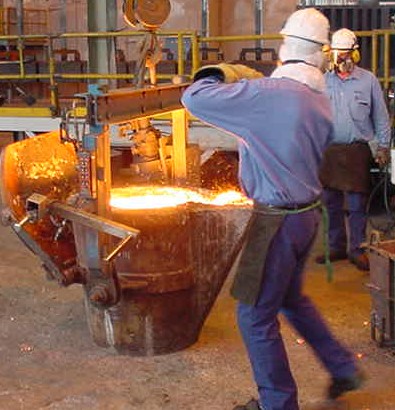Assessing Heat Stress Risk: The Three Level Protocol
- By Ross Di Corleto
- 11/12/2013
- 1 Comment
The three tiered approach for the assessment of exposure to heat has been designed such that it may be applied to a number of varying scenarios where there is a potential risk to heat stress. The suggested approach involves a three-stage process dependent on the severity and complexity of the situation. It allows for the application of the right tool for a scenario utilising a variation of risk assessment approaches from simple to complex.
The first level or the basic thermal risk assessment was primarily designed as a qualitative assessment which does not require specific technical skills in its application or interpretation. In fact it was originally developed for use by front-line employees to assist them to better understand the mechanisms and the many different impacts associated with thermal assessments. This was done by asking the employee to rate specific aspects of the task and environment that impact on their thermal stress on a simple check sheet. Its intent was to show that there are many aspects of the work environment that need to be considered, not just a single dry bulb temperature. In the original version of the basic thermal assessment there was in fact no actual measurement required and the use of the wet bulb globe temperature (WBGT) temperature in the initial assessment was only added later to help balance off the subjective and qualitative nature of the evaluation with some actual measures.
The second level of the process begins to look more towards a quantitative risk approach and requires the measurement of a number of environmental and personal parameters such as dry bulb and globe temperatures, relative humidity, air velocity, metabolic work load and clothing insulation. These measures are then utilised in a heat stress index to determine the projected level of impact on the group or individual. The indices used in this step can be empirical, direct or rational indices (more on this in a later blog). They may result in a temperature, predicted core temperature, or metabolic work limit. These calculations are then used to determine an outcome and apply allowable exposure times for groups of people exposed. The indices are usually applied with certain qualifications: e.g. health, hydration, fitness and in some cases age.
The third step approaches from a more quantitative risk perspective in that it utilises measurements based on an individuals strain and reactions to the thermal stress to which they are being exposed. This direct measurement takes into account the variables (age, fitness etc) for which assumptions are made in the second step of the assessment which utilises indices. This approach measures the actual strain on the individual rather than basing it around a group. The assessment provides a more accurate result and a greater level of confidence in relation to the impact on the individual regardless of the conditions and importantly, includes the impact of personal protective equipment PPE.
It should be noted that the differing levels of risk assessment do require increasing levels of technical expertise and whilst a level 1 assessment could be undertaken by a variety of individuals with limited technical skills the use of a level 3 assessment should be restricted to someone with specialist knowledge and skills. It is important that the appropriate tool needs to be selected and applied depending on the scenario and skills of the assessor.

 Copyright © 2025
Copyright © 2025
[…] be targeted. It’s the starting point of the three level protocol introduced some time ago (http://www.thethermalenvironment.com/assessing-heat-stress-risk-the-three-level-protocol/ ). This might just meet your needs and provide some heat stress awareness training as […]